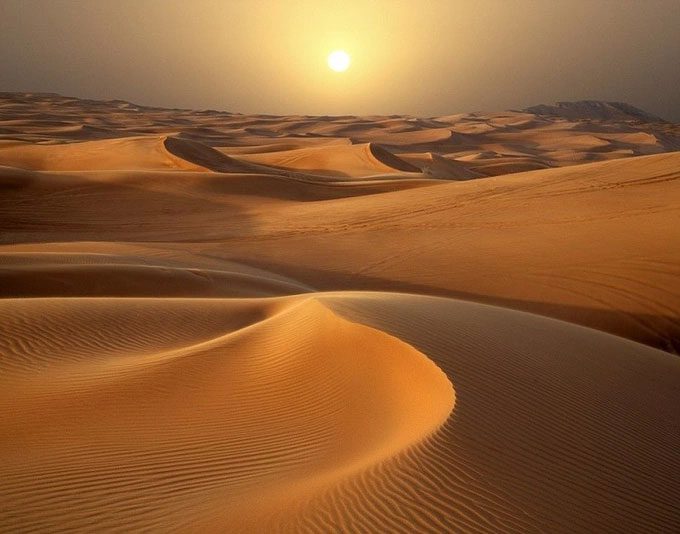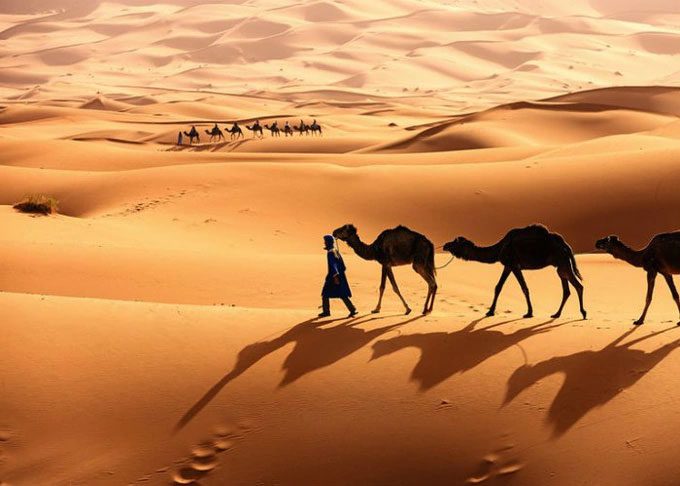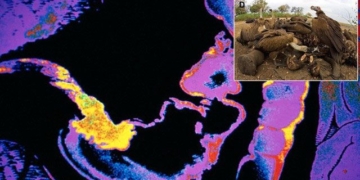When we think of deserts, we often imagine endless stretches of white sand dunes. But what lies beneath that layer of sand?
The Mysteries Beneath the Desert Sand
Of course, the answer to that question varies depending on your location. It’s important to remember that the sand in deserts can constantly shift in large quantities due to the influence of wind.

Deserts are often viewed as barren and empty landscapes. (Photo: Getty).
In reality, there are many different types of deserts. They depend on the inherent terrain of the area.
What was once mountain ranges, plains, forests, or even an ocean can be hidden beneath the sand. It could also be sinkholes, always ready to “swallow” prey from above.
According to National Geographic, the sand near the surface of a desert consists of coarse dust and fine sand particles. They can bind tightly together to form deep, wavy troughs under the influence of desert winds.
Beneath the fine sand lies a multitude of stones the size of pebbles. These are primarily terrestrial rocks that have been worn down over time by weathering processes from rivers and other elements.

Beneath the desert sand lies an entire mysterious world. (Photo: iStock).
Deserts can also form under the sea. In this case, the sea contributes to the process of crushing coastal rocks or those on the seabed. Eventually, these will break down into dust particles and contribute to the vast desert.
However, this process can take thousands or even millions of years.
If we continue to dig deeper, we may find sand that has been compacted and transformed under pressure into a layer of sedimentary sandstone, covering the bedrock of the area.
Here, the secrets of what lies beneath the desert sand will be revealed. They are, in fact, the original landscapes of the region, before being covered by a massive amount of sand.
In 2010, scientists discovered evidence of a large prehistoric lake beneath the sands of the Sahara Desert. It is believed to have formed around 250,000 years ago when the Nile River flooded the area through a small channel.
Life in the Desert

Humans have lived in deserts for millennia. (Photo: Getty).
Deserts often lack rivers and streams. Therefore, life here is incredibly scarce due to the few species of animals and plants that can adapt to the harsh, arid environment.
Despite this, humans have inhabited deserts for thousands of years. Numerous tribes and cultures have developed nomadic lifestyles, such as those who herd sheep, goats, camels, and Tibetan yaks.
They frequently move across vast areas of the desert with their livestock. Their destination is the fringes of the desert where there is grassland and land for grazing.
Deserts are also rich in rare mineral resources. For instance, many deserts with red sand contain laterite minerals. The Great Basin Desert in the United States has long been known for its evaporite mining.
Some deserts, like the Atacama Desert in Chile, are rich in salt minerals and are known for mining sodium nitrate—a component used in explosives and fertilizers since around 1850.
Deserts are also seen as important sources of solar energy due to their limited cloud cover. Thus, deserts receive ample sunlight and have many favorable factors for building energy plants.
Professor David Faiman from Ben-Gurion University pointed out that with current technology, we could meet the entire world’s electricity needs using just 10% of the Sahara Desert’s area.


















































